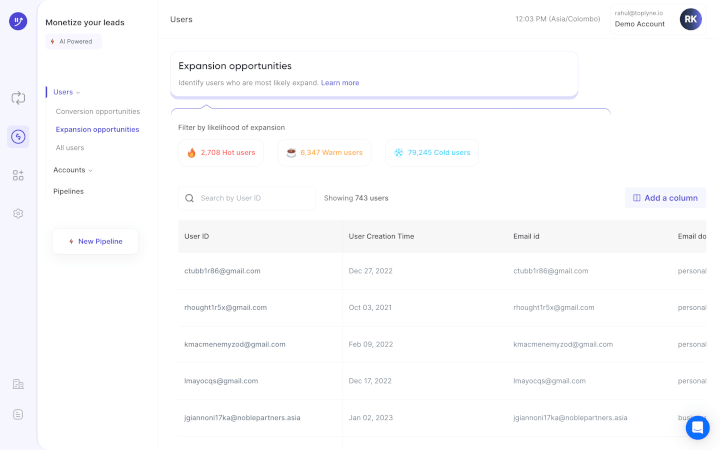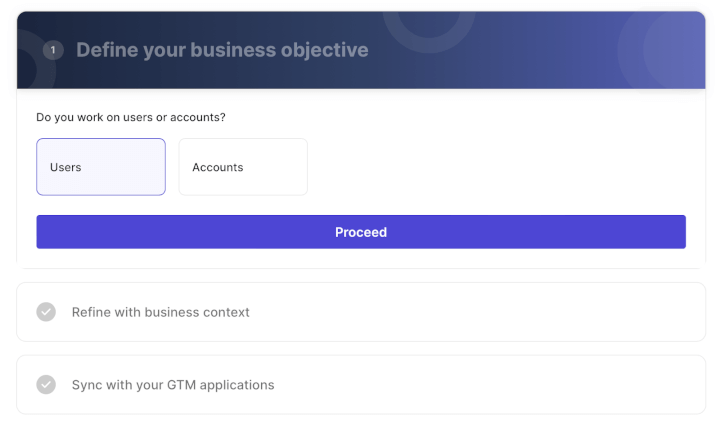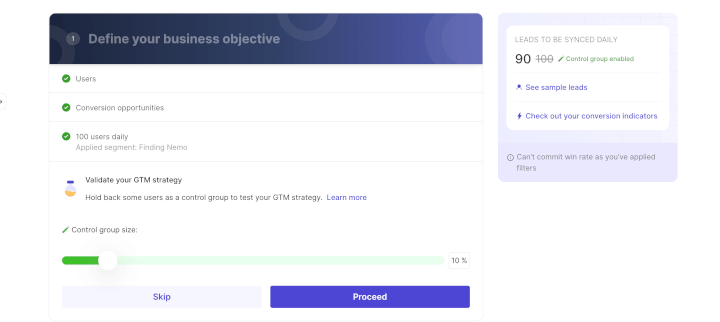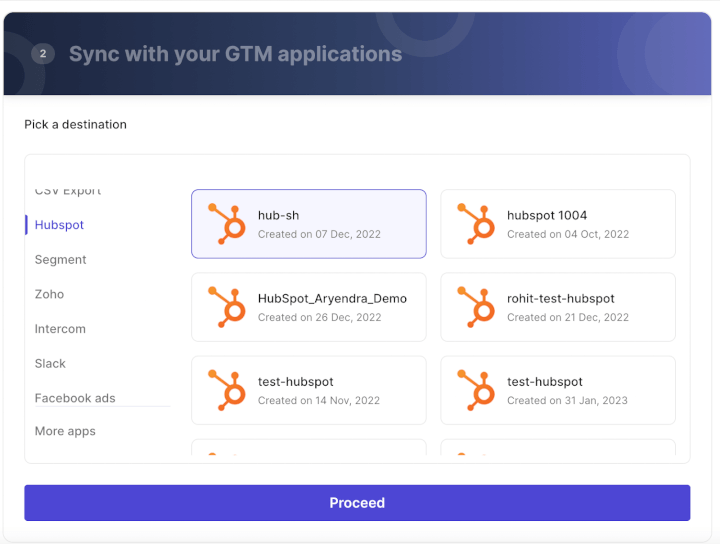Comparing B2B Lead Scoring: Rule-Based vs. Predictive

The middle name of the average B2B sales cycle is long, and so sales reps need a way to identify the high-intent prospects to engage and convert. Lead scoring is a method to prioritize leads based on their intent to buy by assigning each lead a numerical value on a scale. The scoring occurs gradually as leads move through the sales funnel, with each lead being scored based on their characteristics (e.g., +10 for a team of 50-100) and purchase intent signals (e.g., +20 for downloading a case study or -40 for churning from a free plan). As a structured meter for gauging sales readiness, lead scoring is a critical B2B sales tool.
I. The Two Contenders: Predictive Lead Scoring and Rule-Based Lead Scoring
A lead scoring model can be predictive or rule-based. A predictive lead scoring model uses algorithms to determine the probability of a conversion based on your sales and marketing data, user behaviors, and third-party enrichment data such as the demographics of what your economic buyer looks like, firmographics such as if the company has recently raised a funding round, data around their current tech stack, etc. which supplement your existing data.
A rule-based lead scoring model also uses lead scoring software, but you set the rules on determining qualified leads. The score for each lead is updated each time a rule is triggered. Once a lead hits a score that marks them as sales-ready, they’re handed off to your sales reps.
II. Unpacking Rule-Based Lead Scoring
Rule-based lead scoring uses firmographic, demographic, and technographic to score leads. The method relies on the experience and knowledge of your sales team and marketers.
- Setting criteria and assigning scores: Manual interventions
A rule-based lead scoring is a manual system. You define the rules on attributes and weightage. You evaluate the model after every sales cycle to determine its efficacy and make improvements if needed.
- Pros & cons
If you’re a new business or generate very few leads every month, a rule-based scoring model suffices as it is easier to set up with a small data set. As your business grows and you transition to a predictive lead scoring model, you can use the insights gained from traditional lead scoring to improve it.
Rule setting requires an advanced understanding of customer behaviors, which can be challenging as their behaviors are dynamic. The accuracy of results will depend on how accurate and up-to-date the data in your CRM is. This lead-scoring model also leaves you at the mercy of some heuristics that will not evolve with your definition of an ICP or when you enter new markets, leaving you blind regarding good leads.
III. Deciphering Predictive Lead Scoring
- The role of AI and machine learning in predictive scoring
Predictive lead scoring consists of artificial intelligence that uses historical data and predictive intelligence, consisting of machine learning algorithms, automation, and analytics to create an ideal customer profile and identify which current leads fit that profile. It makes the deduction automatically, doing the heavy lifting for you. The most common machine learning model is called logistic regression. Logistic regression in big data analytics helps you develop a clear, specific value, where the max is typically 100. So, in this instance, the model gives a predictive lead score between 0 and 100 for each data point, which you would’ve specified in Step 2.
A higher predictive lead score (ideally 80+) means the prospect is more likely to convert to a paying customer, while those with lower scores (less than 50) can be dismissed as unqualified leads.
- Analyzing intricate patterns from vast data sets
Predictive lead scoring uses big data and analytics to uncover user behavior patterns that predict the probability of a closed deal. Being entirely data-based with no manual intervention, predictive analytics is more objective in its scoring process than its rule-based counterpart.
- Continuous learning & evolving with data
Predictive lead scoring continuously segments and score your leads to surface conversion and expansion pipeline in your CRM for your sales teams to go after. This helps your reps prioritize the right leads and save dozens of hours every sales cycle. The key difference between predictive lead scoring and other manual methods is that it can be automated.
- Pros & cons
Predictive lead scoring pulls data from various sources to build a comprehensive user profile, leading to more accurate scoring. So long as you have the data, it works from the get-go and self-adjusts as it goes through the paces and keeps receiving data.
As a data-driven methodology, predictive lead scoring will only work well for large volume sets and consistently high-quality data. Some predictive lead scoring tools also require a lot of bandwidth from your internal engineering teams.
Toplyne is a predictive lead scoring tool that finds sales pipeline in your sales funnel, without any engineering bandwidth from your internal teams. Built on first-party product usage, CRM, billing, and third-party enrichment data.
Here’s how companies like Canva and Vercel generate sales pipeline from their self-serve funnel using Toplyne:
- Step 1/7: Create monetization playbooks to surface conversion and expansion opportunities (leads most likely to convert to paying customers, and teams most likely to grow into larger teams)

- Step 2/7: Choose the right leads to target – users (individual users) or accounts (a group of users with an organization).

- Step 3/7: Select the frequency at which you would want leads synced in your GTM apps.

- Step 4/7: Define how many leads you want by either the number of leads or your expected win rate, depending on your sales capacity and GTM strategy.

- Step 5/7: Build custom segments - Build custom segments based on And/Or logic at the deepest level of sub-properties within your product analytics.

- Step 6/7: Validate your GTM strategy - Hold back some users as a control group to test your GTM strategy.

- Step 7/7: Sync your product qualified pipeline into your GTM destinations - CRMs, sales & marketing execution tools, and customer engagement platforms.

IV. Key Differences
- Precision & Accuracy: Which model reigns supreme?
Predictive analytics makes informed guesses from vast data sets, while rule-based scoring is based on hunches and existing knowledge of customers. Data science is more accurate and precise than human guesswork.
- Scalability: Handling large data quantities
A predictive lead scoring system requires large amounts of data to build, run, and test. It scales with your business. Traditional lead scoring is better for a small volume of leads and cannot scale easily with an increase in leads.
- Adaptability: How each model reacts to changing data patterns
Keeping up with changing customer data, running periodic re-evaluations, and re-adjusting lead scoring criteria is inefficient, impossible even, as your lead volumes increase. Predictive lead scoring works in real-time, automatically updating lead profiles as soon as new data is available.
- Setup & Maintenance: Effort and expertise required
With predictive intelligence built-in, you only need to supervise your predictive lead scoring model and determine the data it should use. Building a lead scoring workflow and refining a rules-based model requires inputs from experienced marketers and sales personnel and, as such, calls for significant mental effort and time.
V. Scenarios: When to Use Which?
- Exploding top of the funnel: Which fits best?
If you’re a SaaS start-up with a smaller top-of-the funnel, you may not need predictive lead scoring at this point. Predictive lead scoring will become crucial as your ToFu blows up. This is so because while rule-based lead scoring is good at finding terrible leads, it is terrible at finding good leads.
- Established enterprises: Making the choice
Qualifying hundreds or thousands of leads a month with a rules-based system is impractical and leads to missed opportunities simply because it cannot keep up with new or changing customer data. Predictive lead scoring is critical in building accurate user personas and leveraging data points as they come in to identify quality leads.
VI. Implementation Challenges
- Data quality & its impact
A predictive lead scoring model depends on large volumes of consistent, high-quality data failing which, it is unlikely to produce the desired results. Data quality is equally important for a rules-based system, only you’ll work with far smaller data sets.
- Technological infrastructure needed
For predictive lead scoring, you integrate the software with your CRM, marketing software, and a data enrichment service. For a rules-based system, apart from integrating the software with your sales and marketing systems, you define rules to trigger automation.
VII. Making Your Choice
- Balancing immediate needs with long-term goals
With business growth, sales, and marketing teams work with more data and leads. Lead management and scoring and the overall sales process tend to become complex. Predictive analytics reduces the burden on your sales and marketing systems and personnel while ensuring a higher accuracy of qualified leads. It should be under consideration as you start dealing with a larger volume of lead data.
- Hybrid models: Can they offer the best of both worlds?
A predictive lead scoring software that allows you to build your models to your requirements adds human intelligence and control to the mix. You can run experiments and create new scoring attributes based on real-time intent signals and your traditional lead scoring methodology.


.svg)









.png)